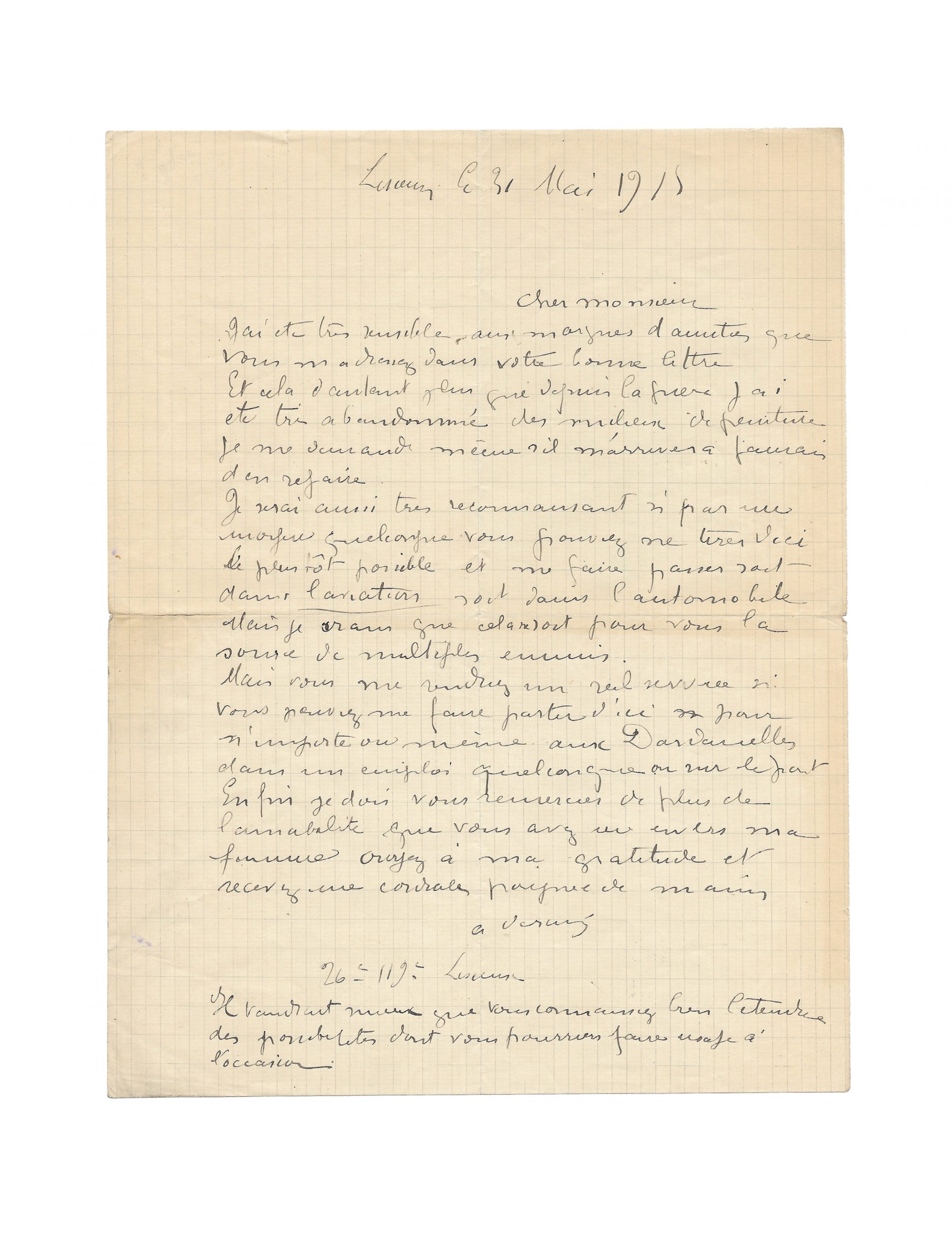DERAIN, André (1880-1954)
Autograph letter signed « A Derain » to a gentleman
Lisieux, 31st May 1915, 1 p. in-4°
« I have been very abandoned from painting circles, I even wonder if I will ever do some again »
Fact sheet
DERAIN, André (1880-1954)
Autograph letter signed « A Derain » to a gentleman
Lisieux, 31st May 1915, 1 p. in-4°
Fold marks, tiny spots, tiny tears on folds
Letter sent from the front where Derain was mobilized to the infantry regiment of Lisieux. Filled with disillusionment, the painter wonders about his own future as an artist
« Cher monsieur
J’ai été très sensible aux marques d’amitiés que vous m’adressez dans votre bonne lettre.
Et cela d’autant plus que depuis la guerre j’ai été très abandonné des milieux de peinture, je me demande même s’il m’arrivera jamais d’en refaire.
Je serai aussi très reconnaissant si par une mission quelconque vous pouviez me tirer d’ici le plu tôt possible et me faire passer soit dans l’aviation soit dans l’automobile mais je crains que cela ne soit pour vous la source de multiples ennuis.
Mais vous me rendriez un réel service si vous pouviez me faire partir d’ici par n’importe où même aux Dardanelles dans un emploi quelconque ou sur le front.
Enfin je dois vous remercier de plus de l’amabilité que vous avez eu envers ma femme. Croyez à ma gratitude et recevez une cordiale poignée de mains.
A vous
A Derain
26e 119e Lisieux
ll vaudrait mieux que vous connaissiez bien l’étendue des possibilités dont vous pourriez faire usage à l’occasion. »
At the beginning of the First World War, Derain was mobilized in the artillery, in the infantry regiment of Lisieux. He served in Champagne, in the Somme, in Verdun, on the Chemin des Dames until 1917. then in the Aisne and the Vosges. On November 11, 1914, he wrote to his wife Alice: “I had always thought, even hoped, everything about a war and I believe that I am still not up to the task. I do not understand anything about it. This continual, daily war, without history, is truly terrible. That is why it will not be difficult to get out of it. We will never understand”
Hailed as the pioneer of a new art, Fauvism, before the war of 1914, he moved after 1918 towards a realism with renewed classicism.
